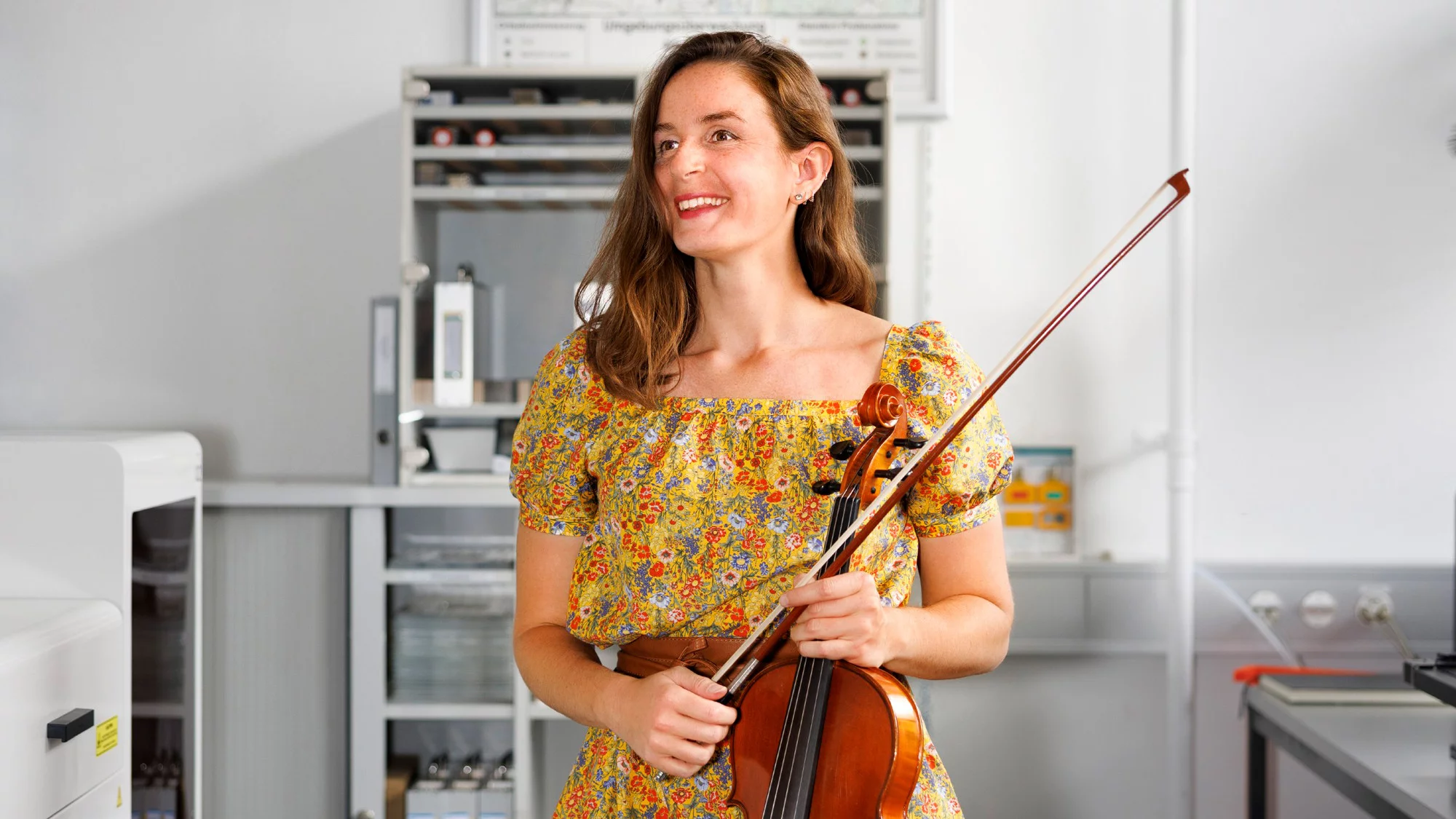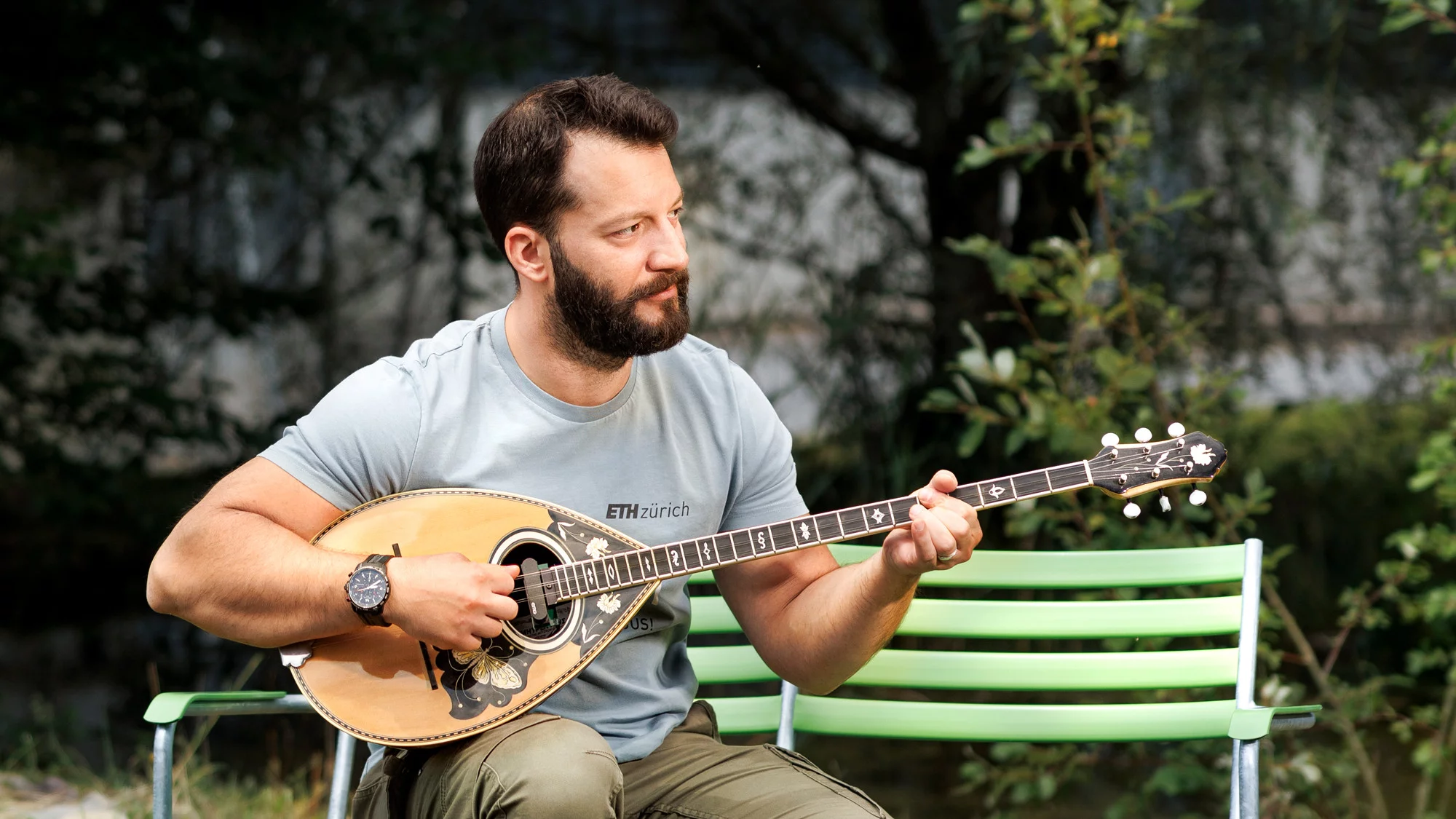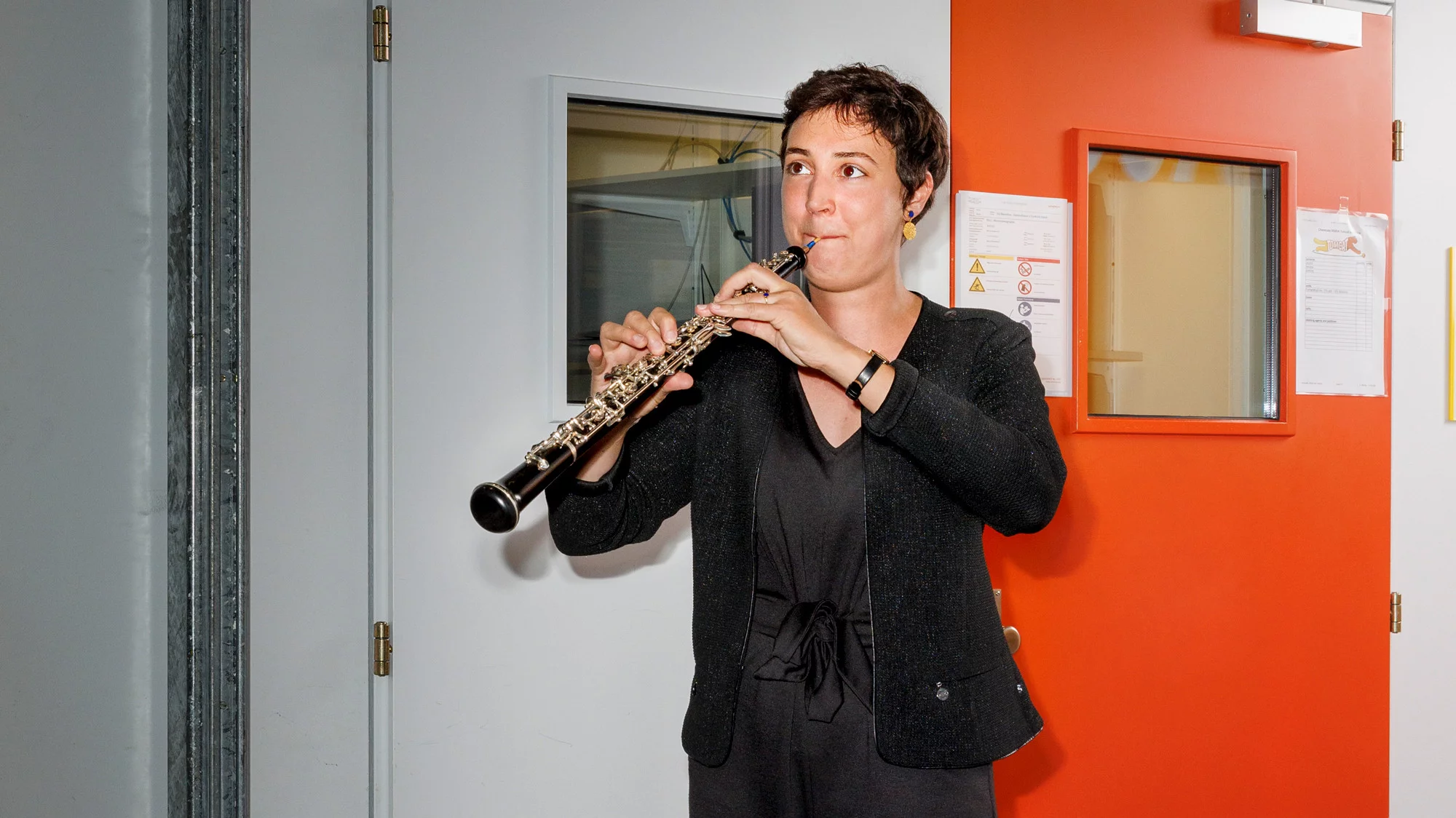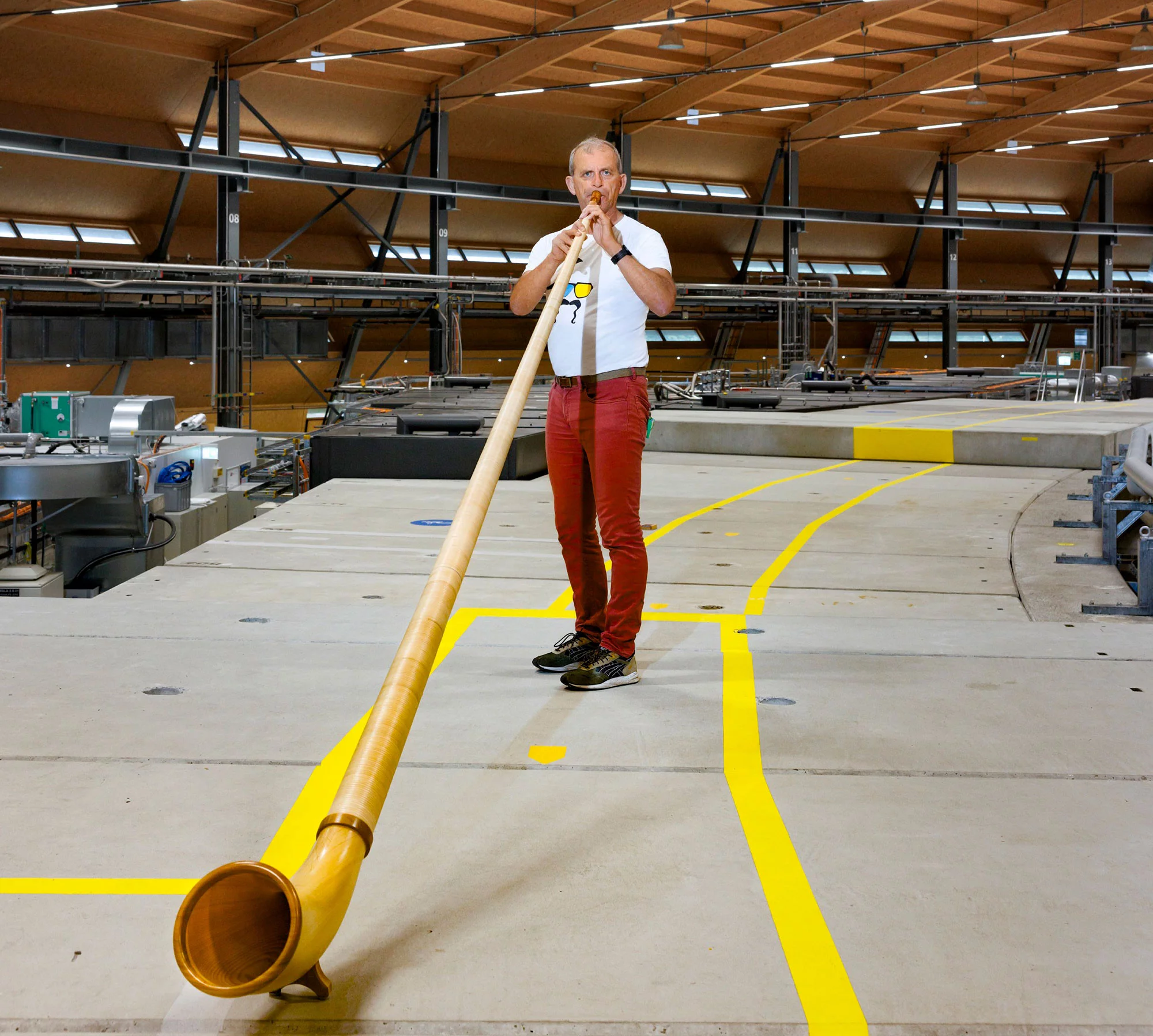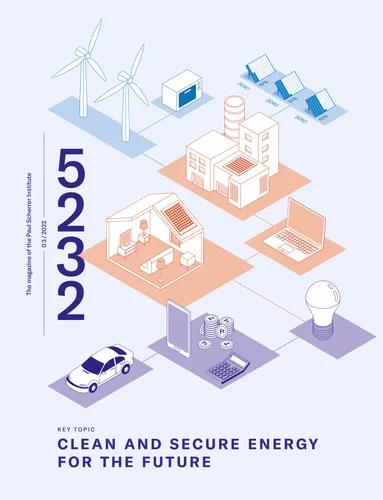Sounds coming from technical devices and scientific research processes are the order of the day at PSI. We already presented a tiny excerpt of the PSI soundscape in the 1/2022 issue of the PSI magazine 5232. Now and then, though, completely different sounds ring out on both sides of the Aare campus, because many of our researchers are also musicians. Let us introduce you to some of them.
The Band
When Robert Sobota (drums), Ludmila Leroy (bass and vocals), and Peter Alpert (guitar) cut loose, a powerful, groovy sound reverberates from the PSI research building. They came together with their own respective preferences: the guitarist, founder of the PSIchedelics, goes for grunge; the singer especially loves the songs of Freddie Mercury, the long-deceased lead singer of the group Queen; the drummer has a soft spot for progressive and art-rock. Their research interests, too, are different. Ludmila Leroy works in solid-state physics at the X-ray free-electron laser SwissFEL and at the Swiss Light Source SLS. Peter Alpert works with airborne particles at the SLS. And for Robert Sobota the focus is on next-generation superconductors. Yet anyone who has heard them immediately knows: on the musical level, they’re in perfect harmony!
Viola
Originally, Lily Bossin studied classical guitar at the music conservatory in her spare time, but then – in search of a “more social” instrument – she opted for the viola and its full, soft and somewhat melancholy sound. She especially loves baroque pieces such as those by 18th century German composer Georg Philipp Telemann. At PSI Lily Bossin works in the area of radiation protection and conducts research into new solutions and new materials for measuring the radiation dose from ionising radiation.
Bouzouki
At the age of five, Ioannis Samaropoulos had already begun studying a musical instrument. First violin, then guitar as well, before he decided on the bouzouki, a Greek stringed instrument, at the age of 11. The starting point was rembetiko, a musical style born in the early 20th century with a confluence of Greek folk music and Ottoman musical traditions. In these songs, homesickness and longing are common themes. Ionnis Samaropoulos partly financed his university studies by playing bouzouki and singing. He now works at PSI as an incident analysis specialist in the area of radiation protection and safety.
Oboe
The oboe has an expressive tone that extends from nasal and light to dark and velvety and is associated with the sound of ducks, as can be heard in the symphonic fairy tale Peter and the Wolf. Margaux Schmeltz, like anyone who wants to bring forth melodious tones from an oboe, spends a lot of time shaping the double-reed mouthpiece, which resembles a crushed drinking straw. Among her favourite pieces are baroque compositions by Tomaso Albinoni and modern sonatas by Francis Poulenc. At PSI she is engaged with the dynamic mapping of systems in motion, particularly in connection with human hearing, to gain new insights into their biomechanical properties.
Alphorn
The tones that Micha Dehler elicits from the alphorn using articulation techniques known as growl, bend and shake, can drown out the seemingly endless technical background noise inside the Swiss Light Source SLS for a few moments. Actually at home in jazz, where he plays trumpet and flute, he is also a big fan of the piece Sura Kees, a funky piece for alphorn and big band by the Aargau composer Urs Erdin. At PSI he is working on the SLS update to be implemented by 2025, concentrating in particular on calculations to prevent beam instabilities.
Ähnliche Artikel
Soldering on a big stage
Whoever makes it onto the podium here is one of the world's best professional talents: PSI electronics engineer Melvin Deubelbeiss won the silver medal at WorldSkills 2024.
Master of the flow
Even as a student, Athanasios Mokos was excited by the dynamics of fluids. Today at the Paul Scherrer Institute PSI, he models complex processes such as the formation of deposits on reactor fuel rods.
Cristina Müller
Developing and redesigning radiopharmaceuticals for tumour therapies


